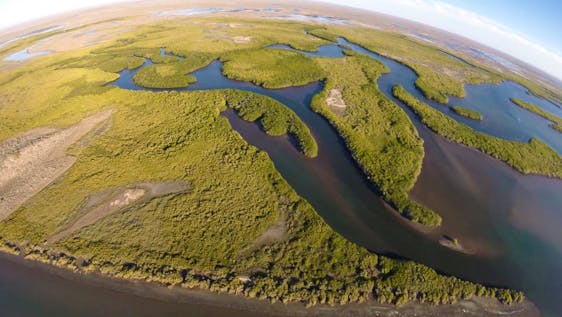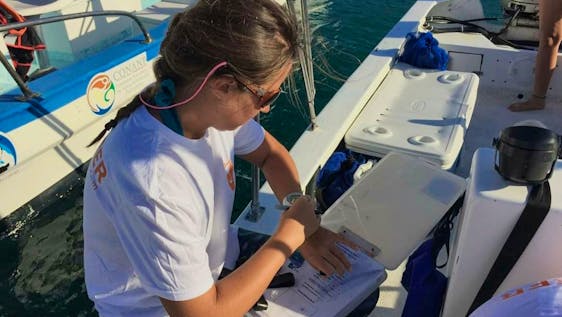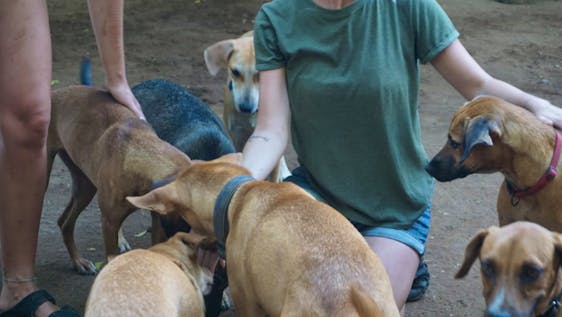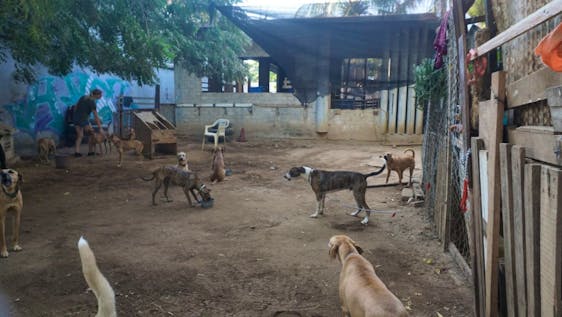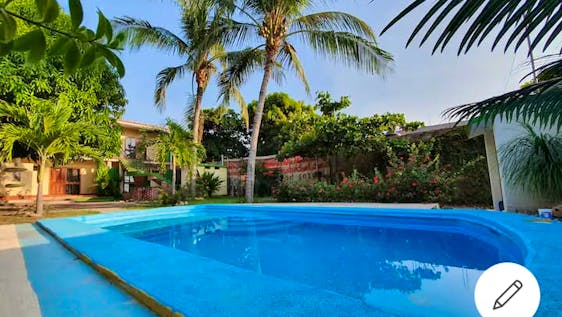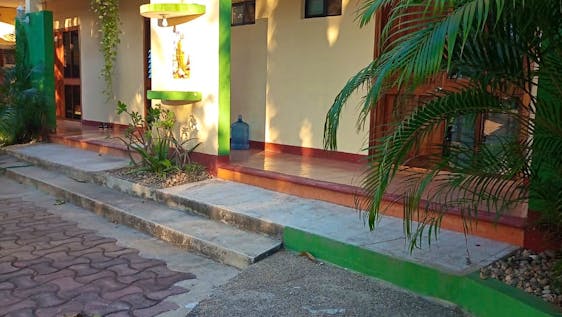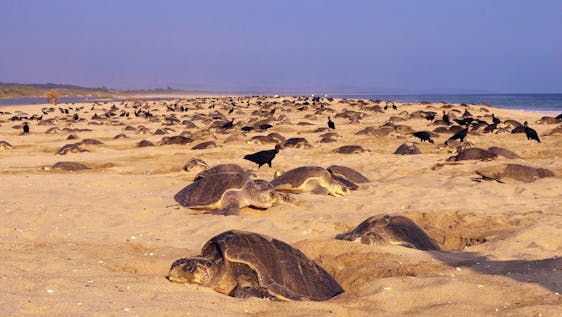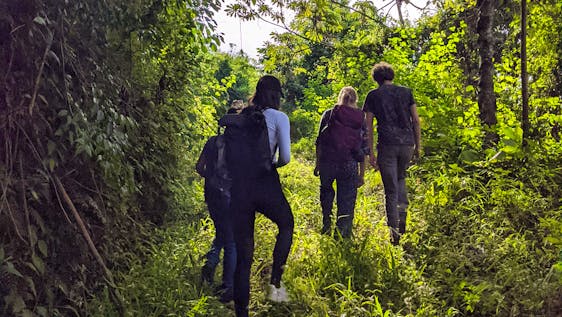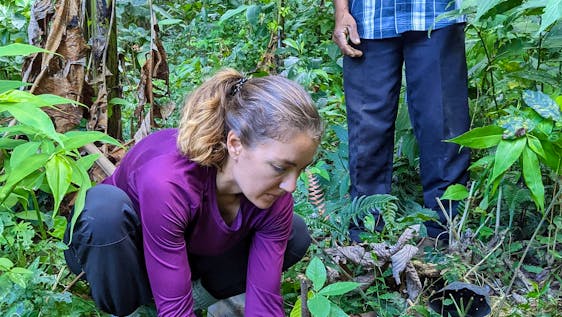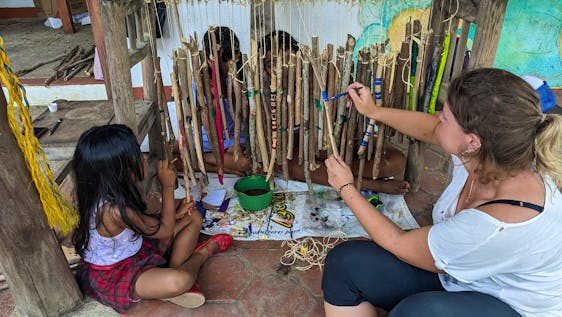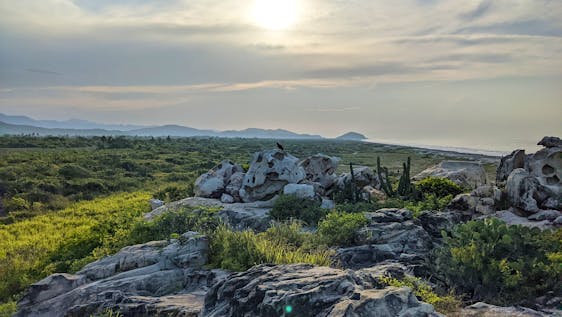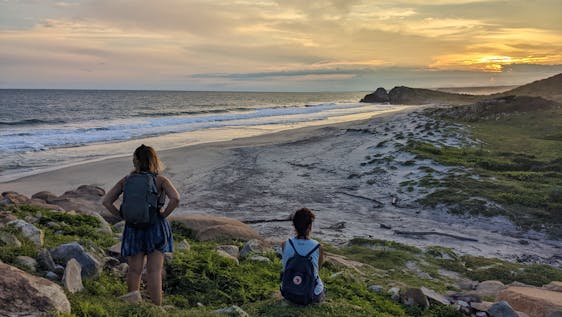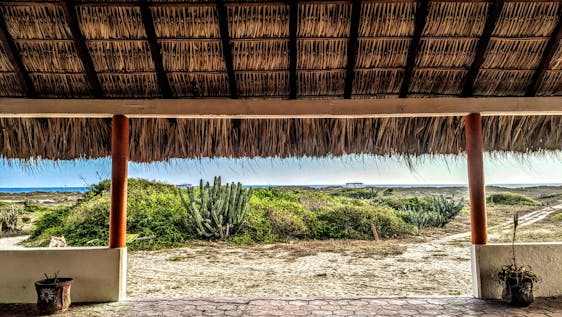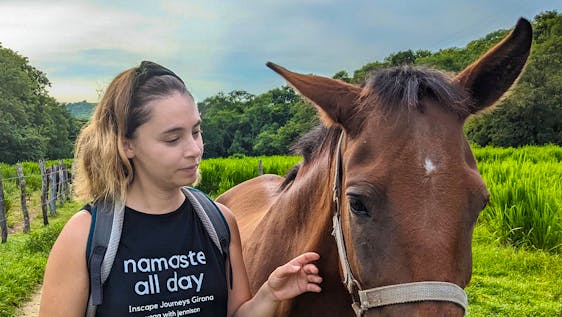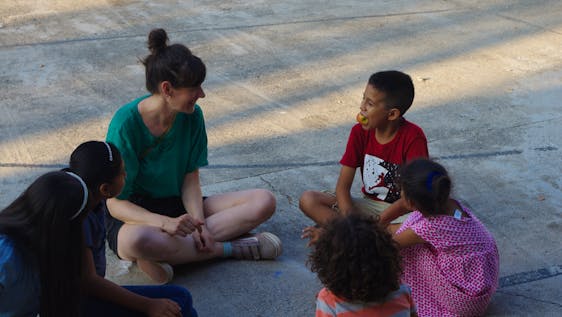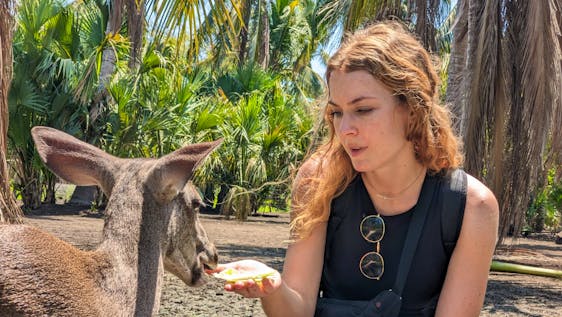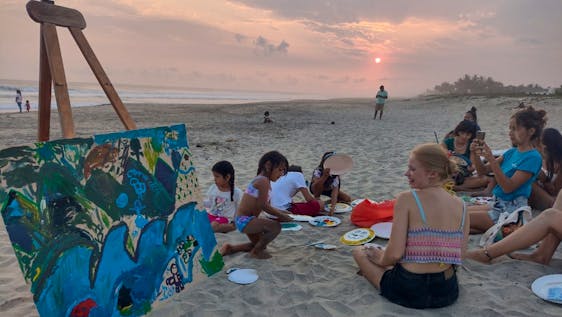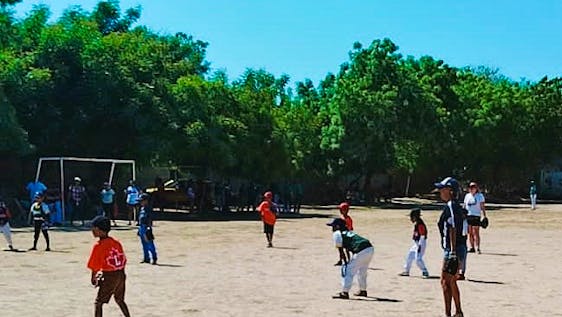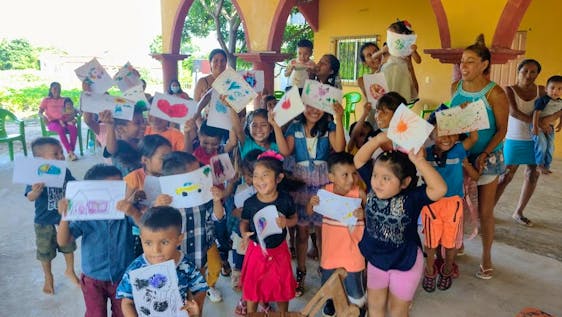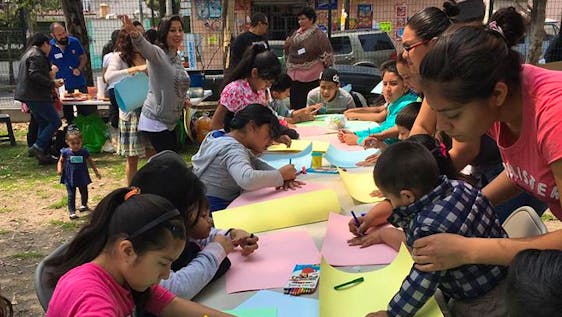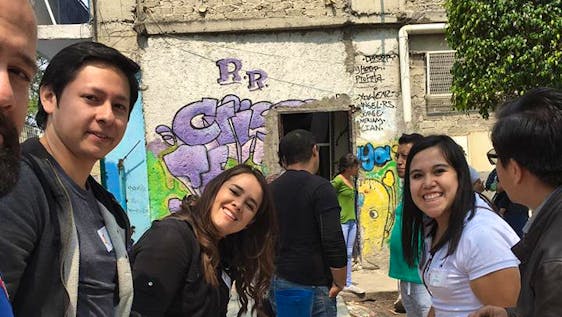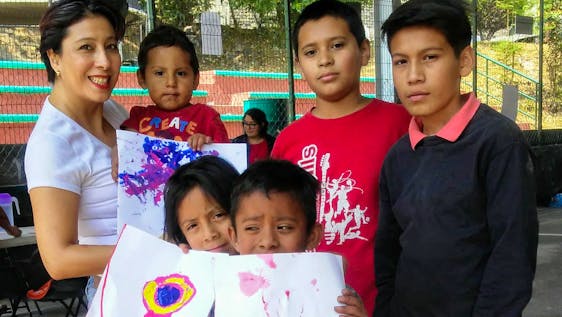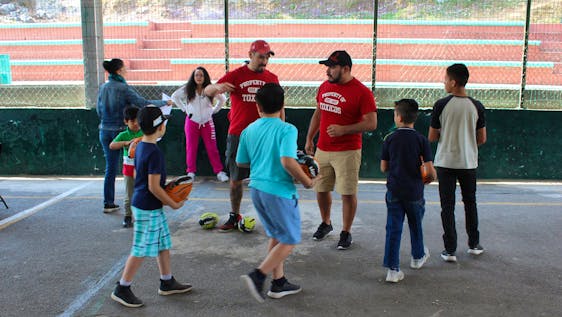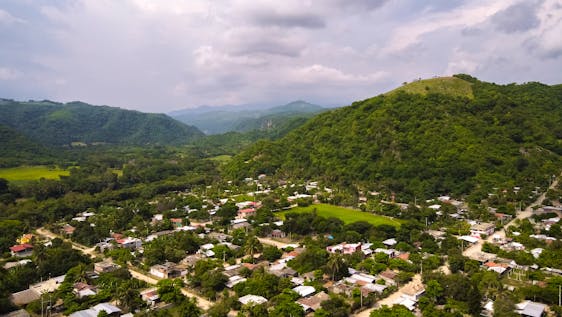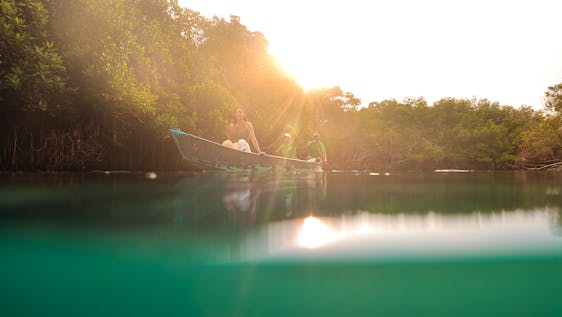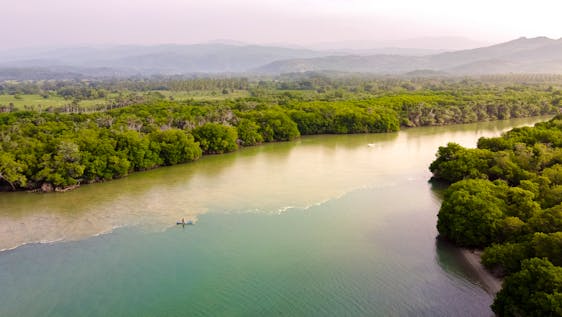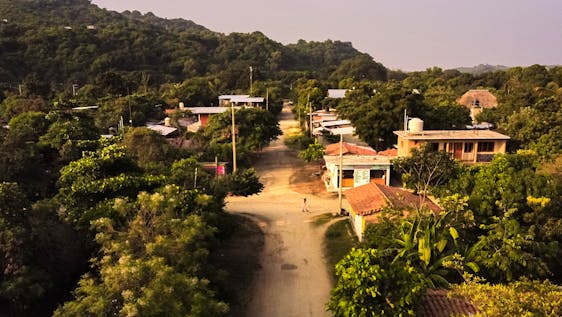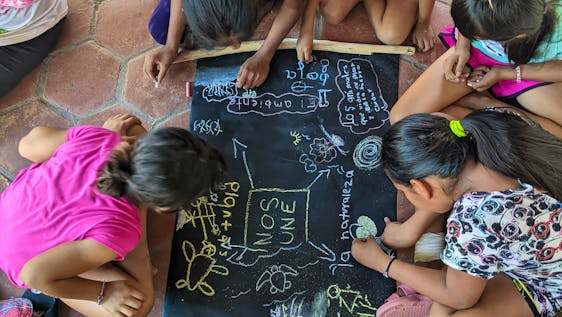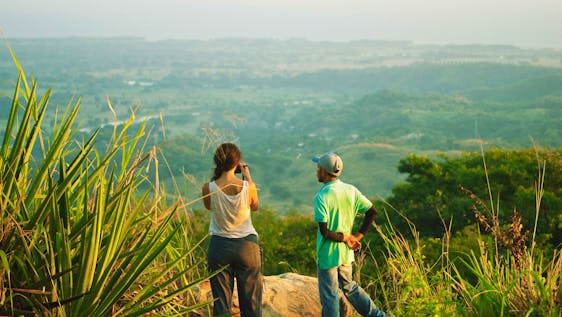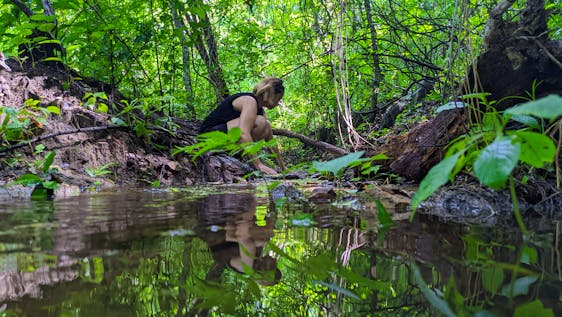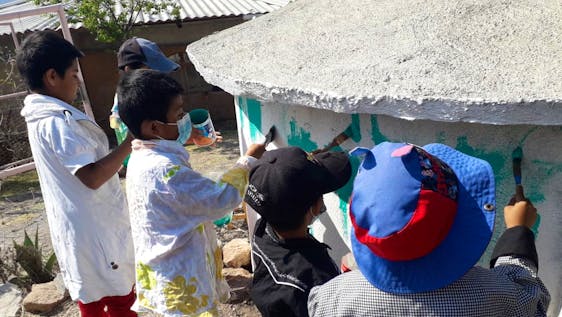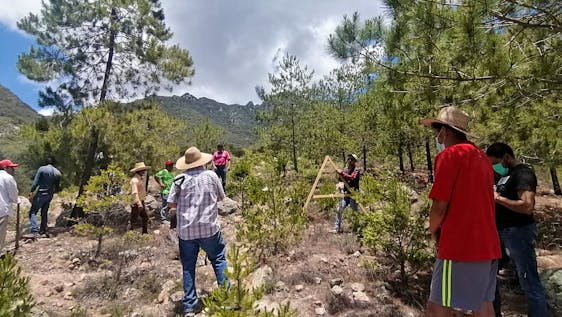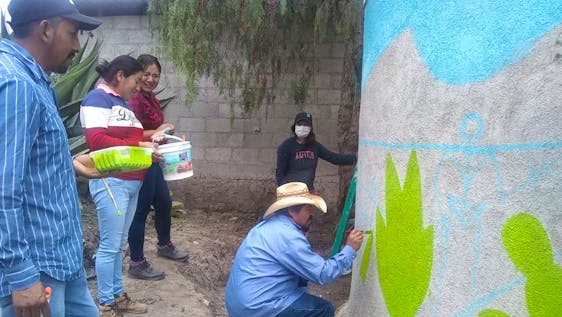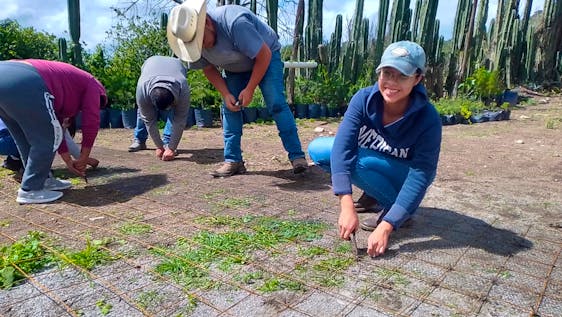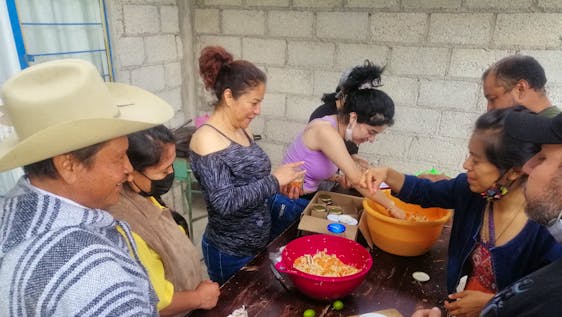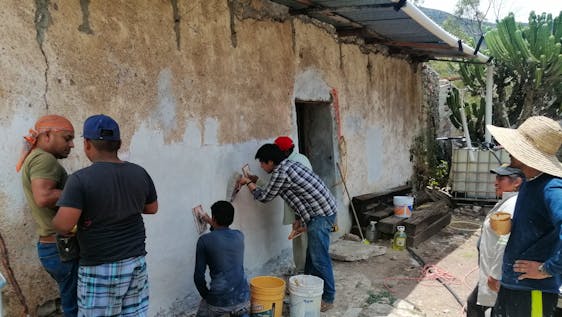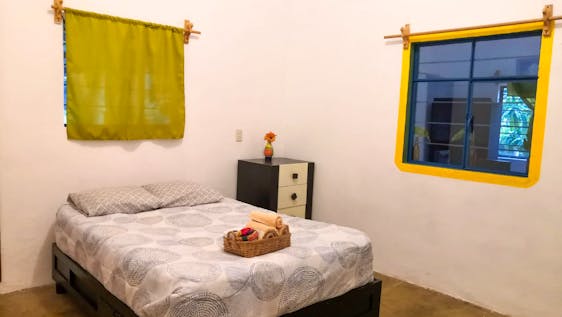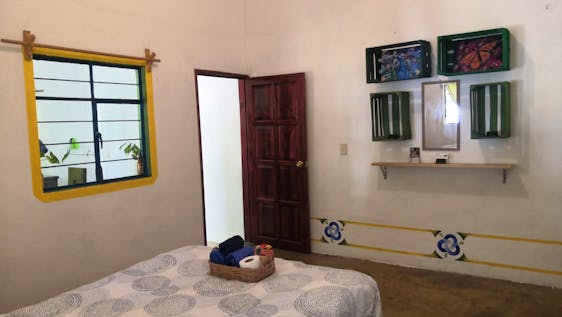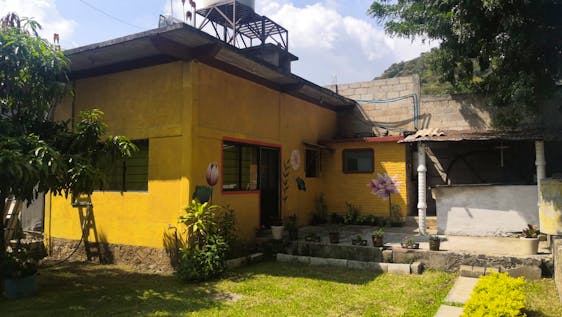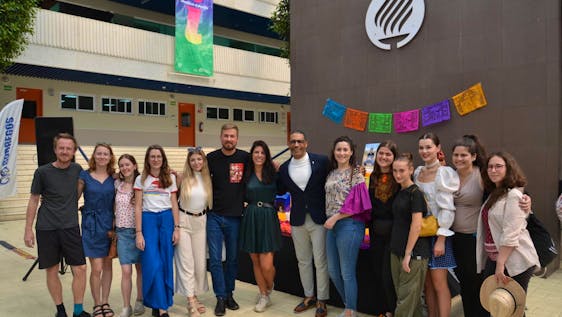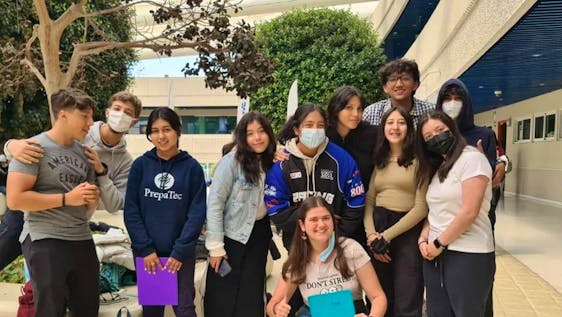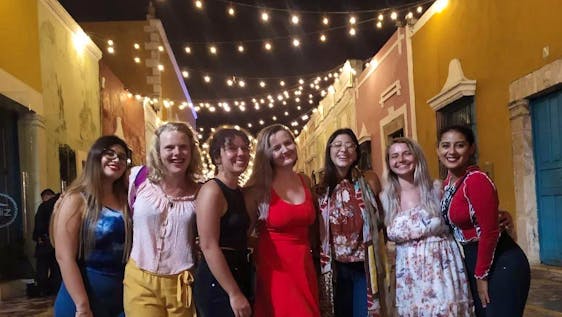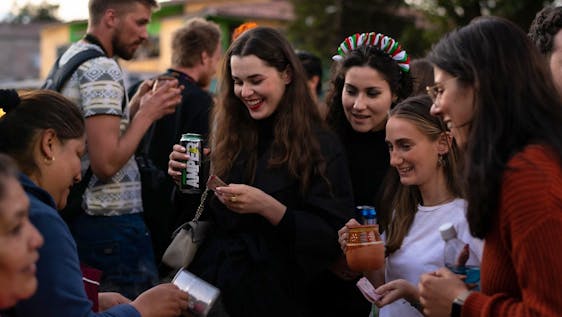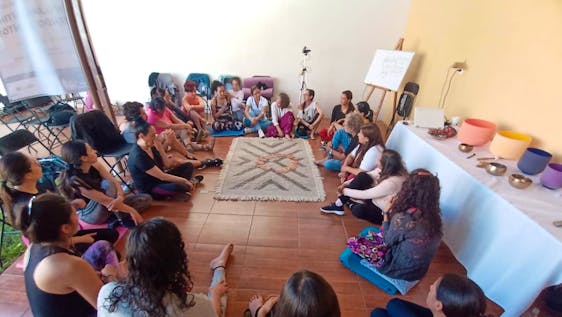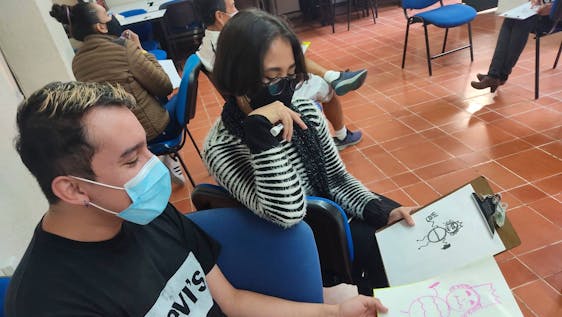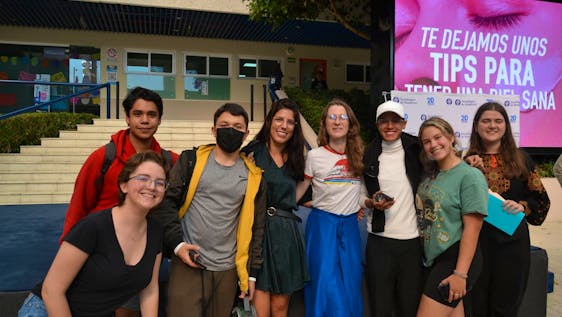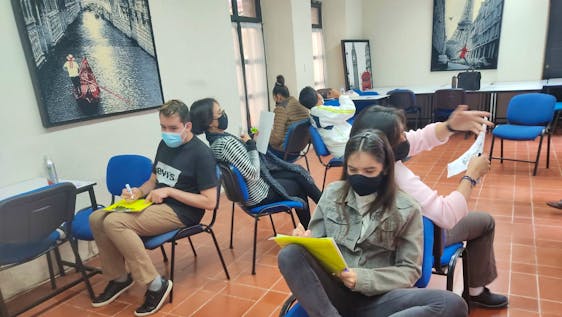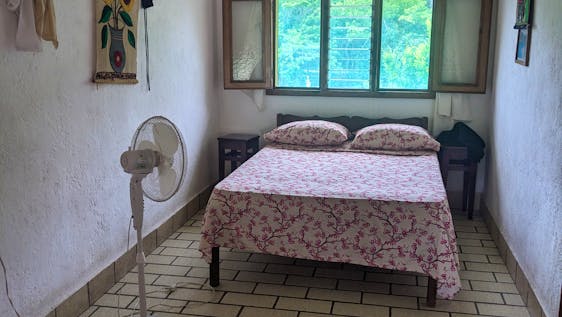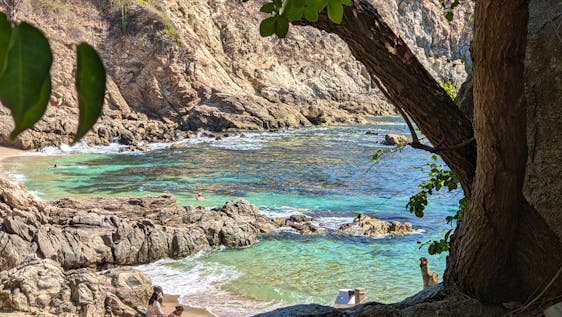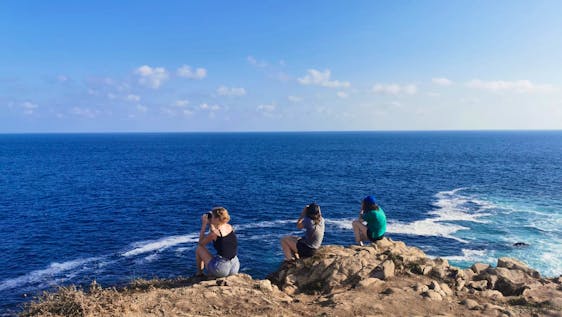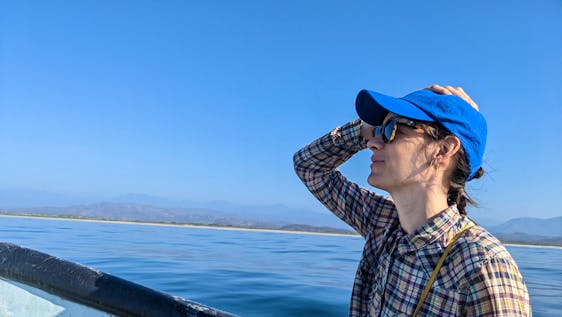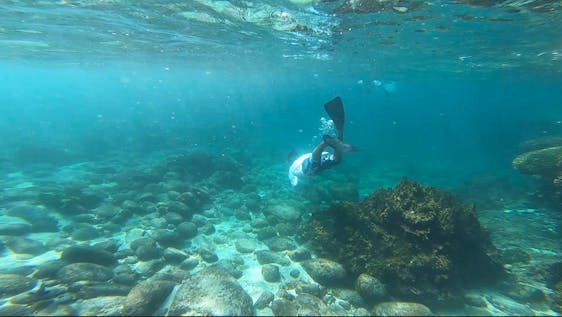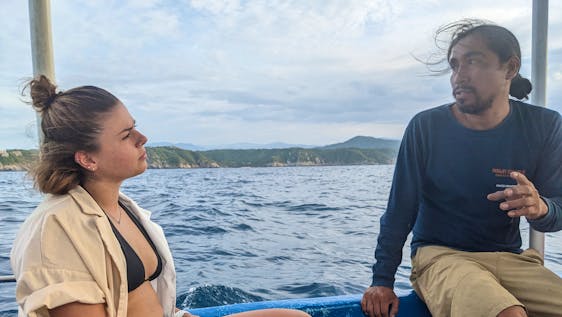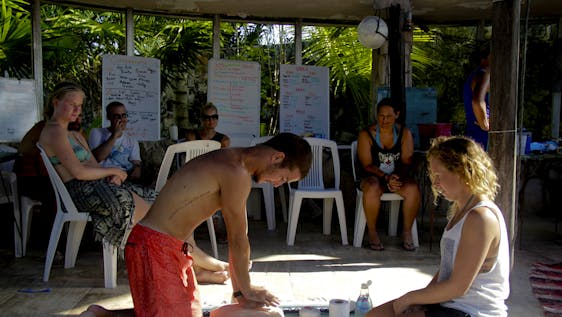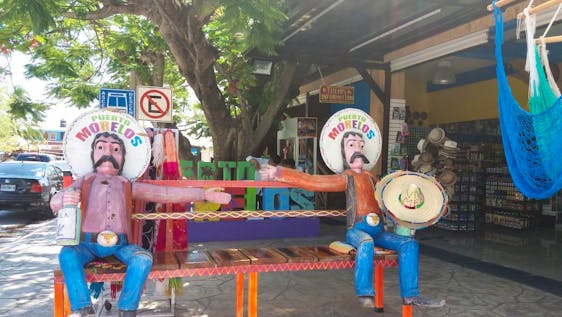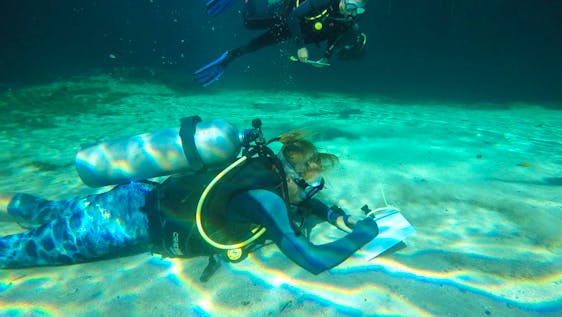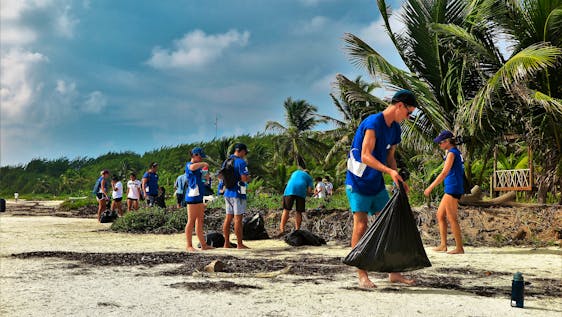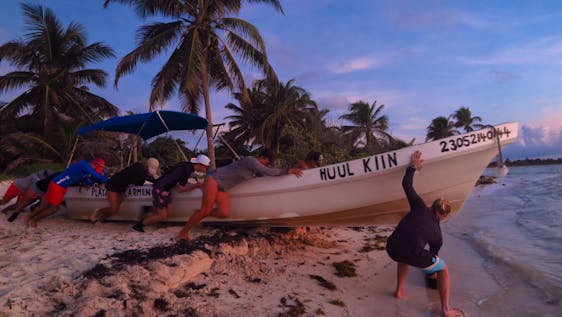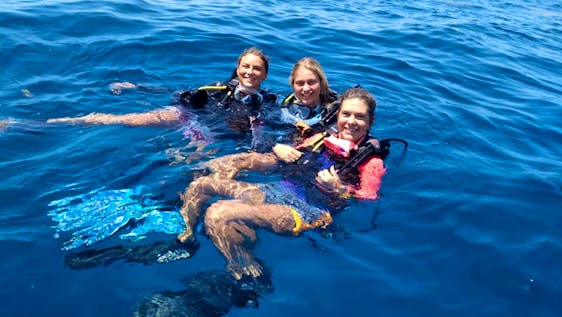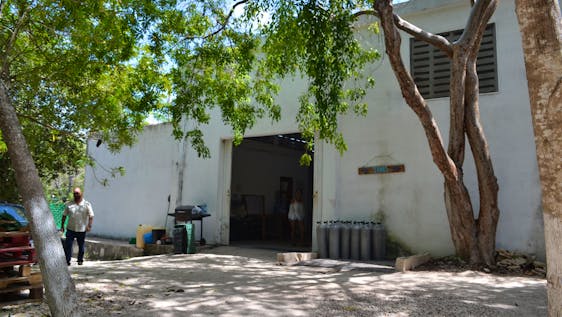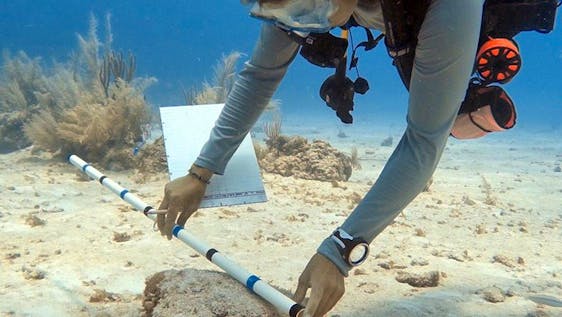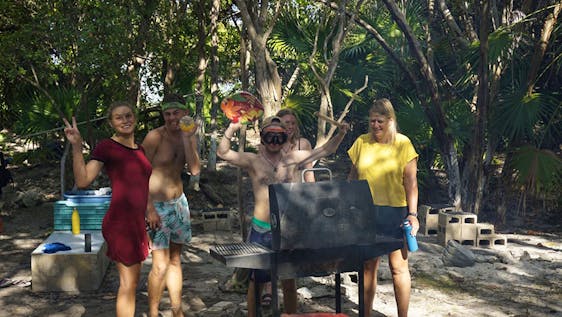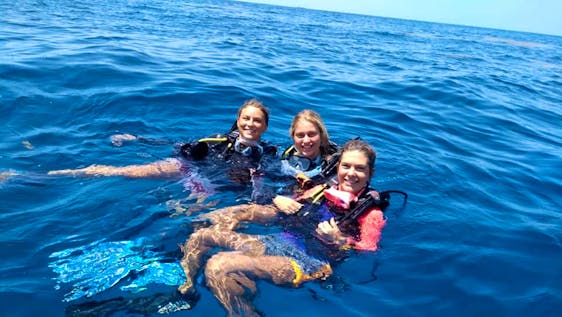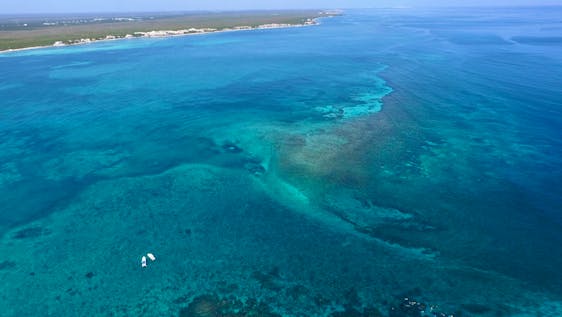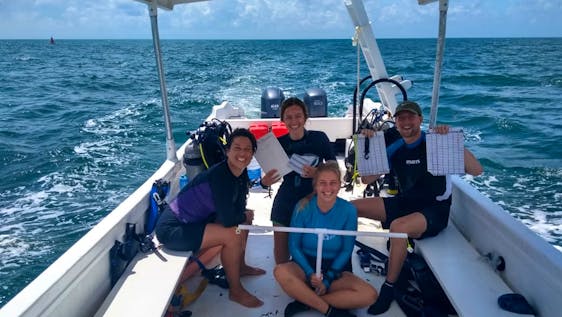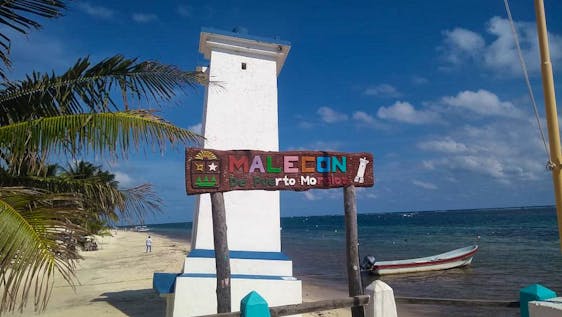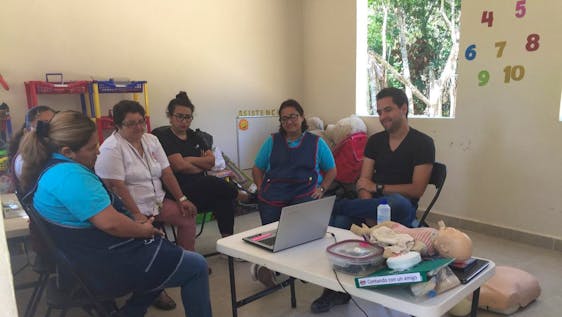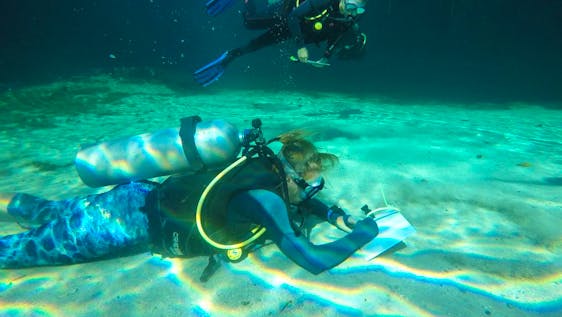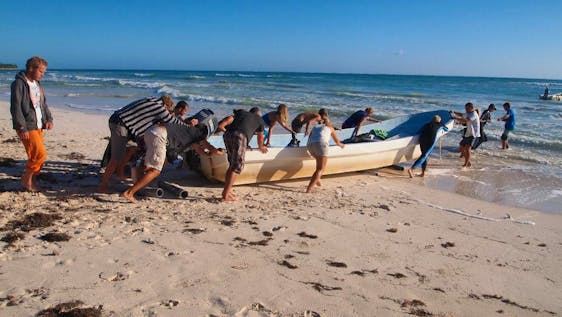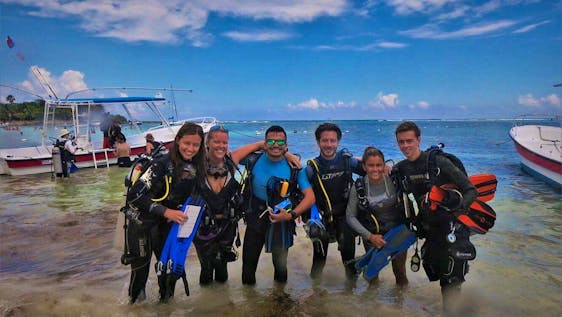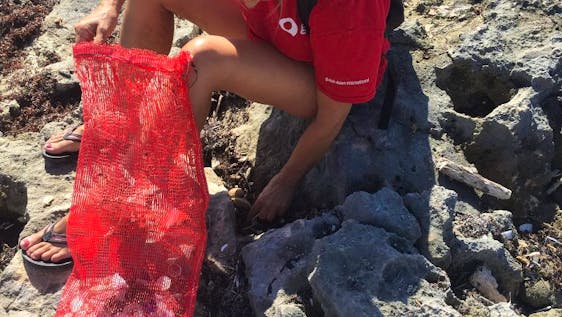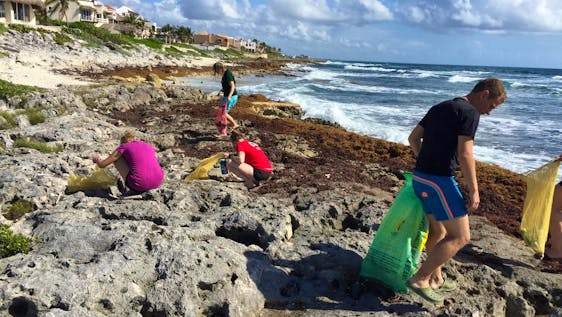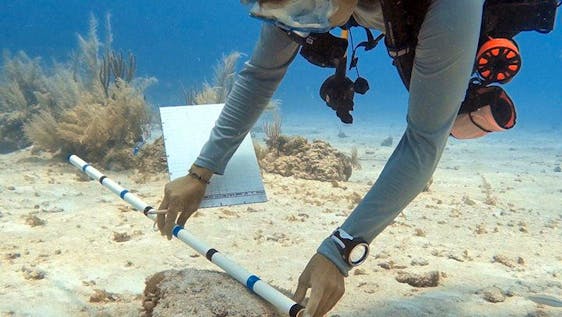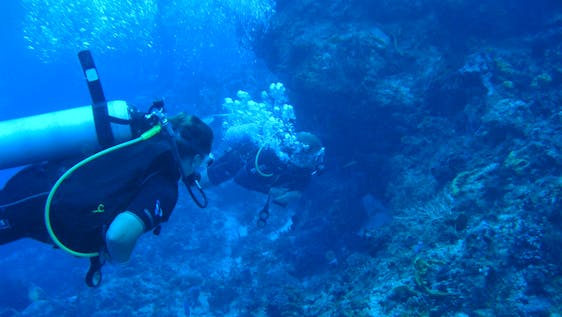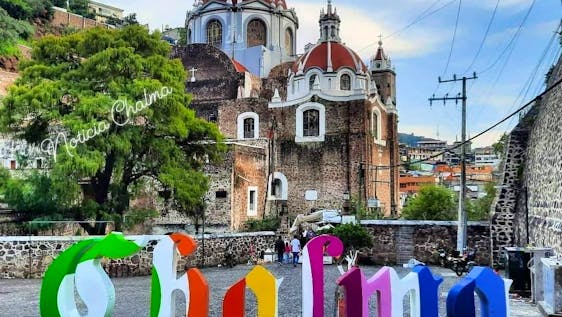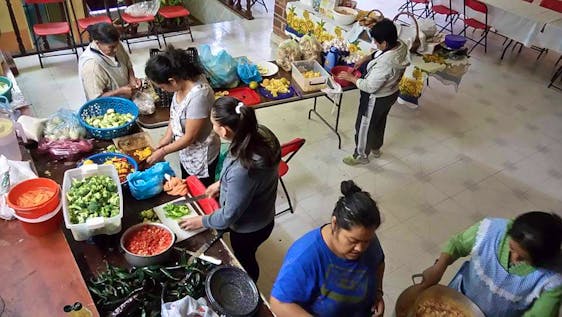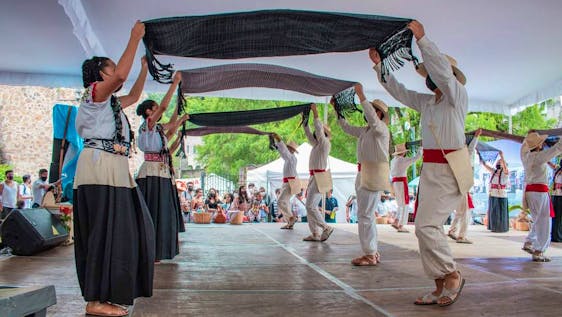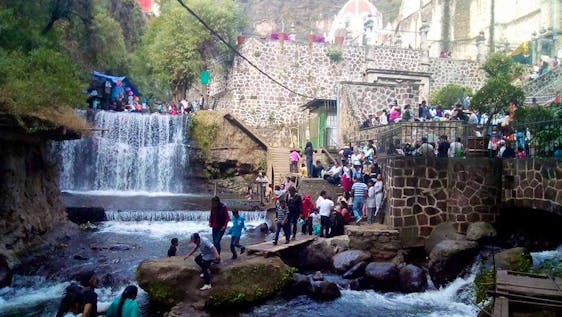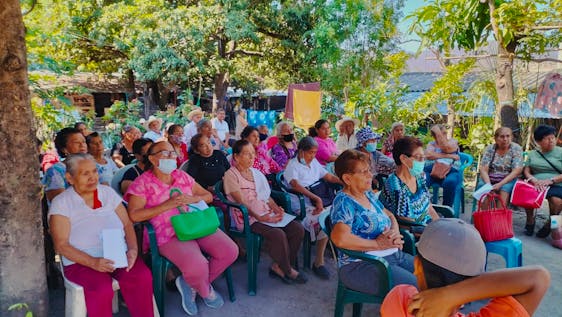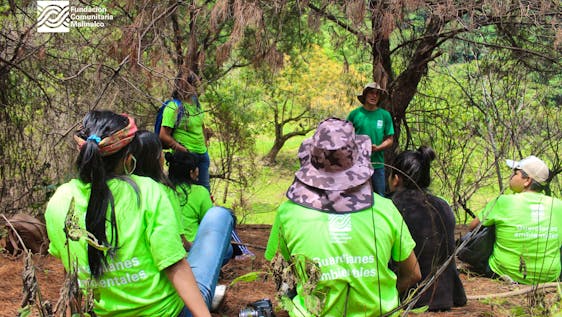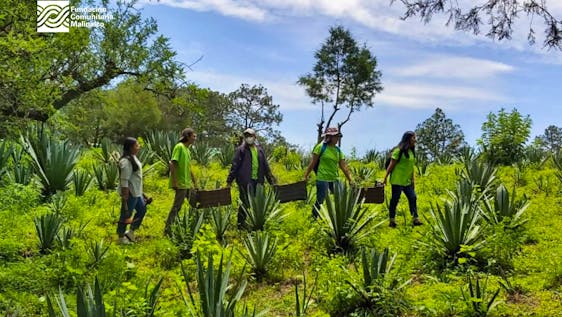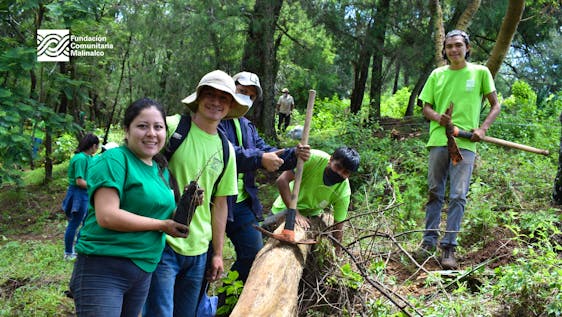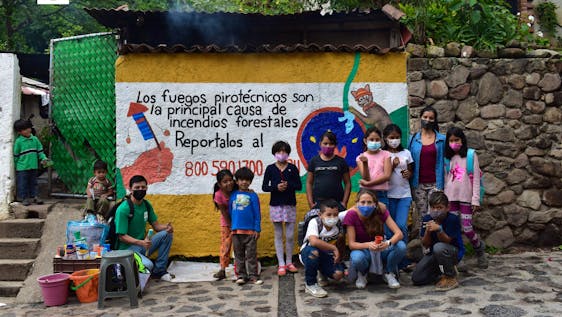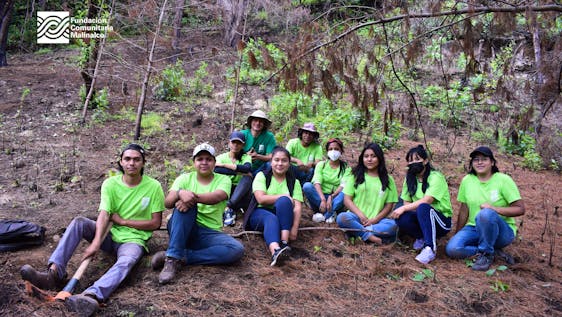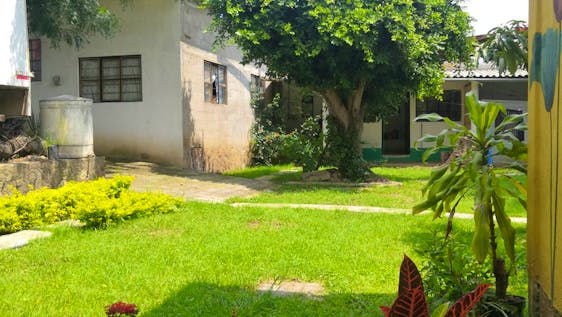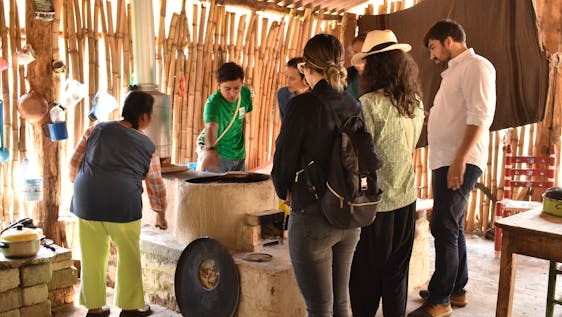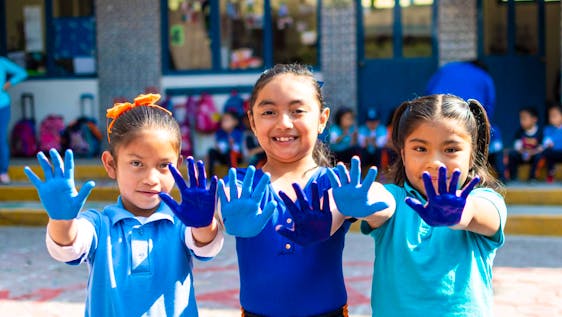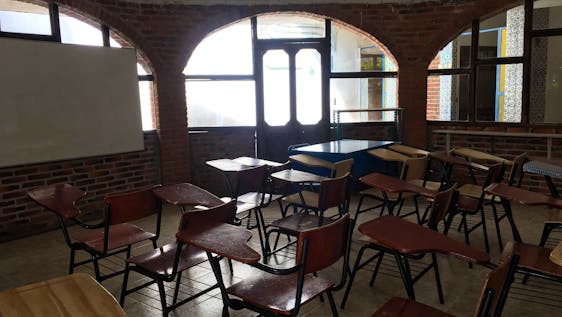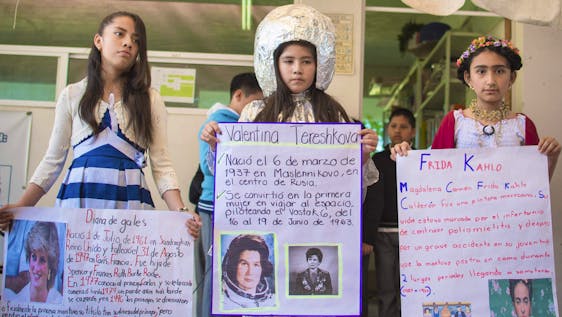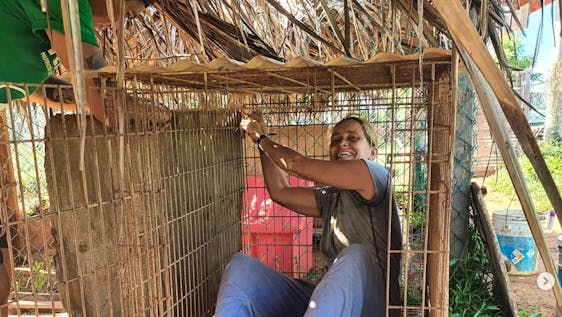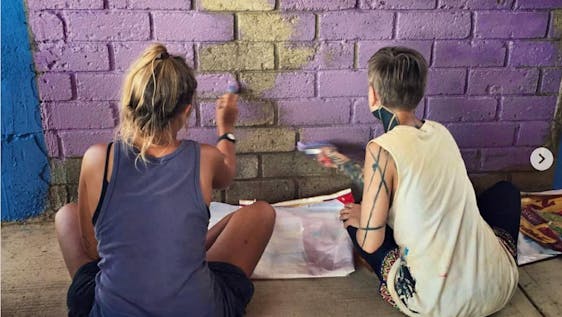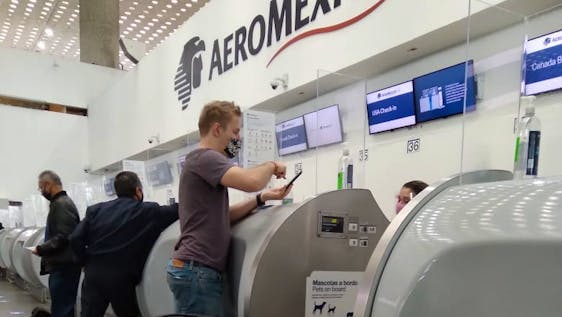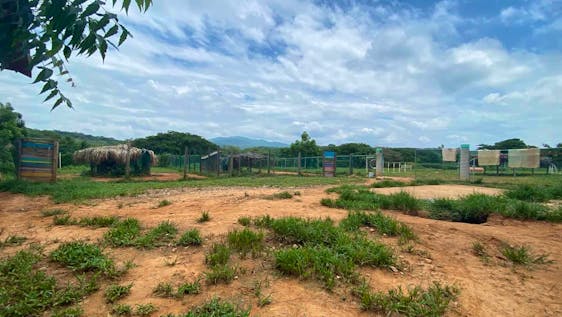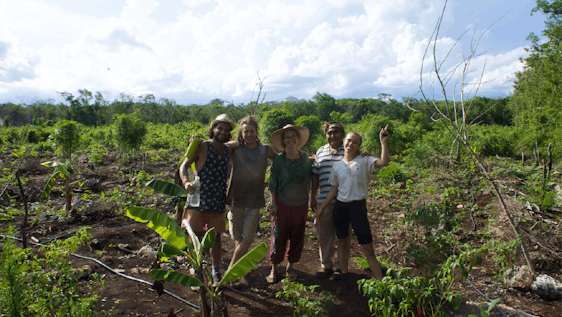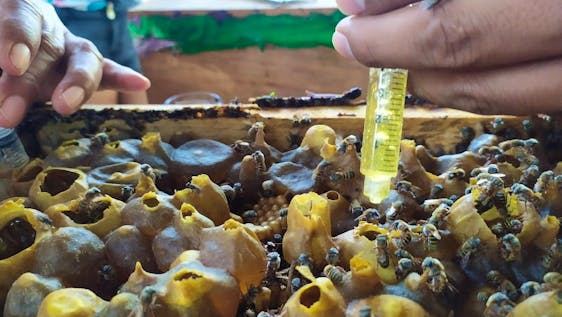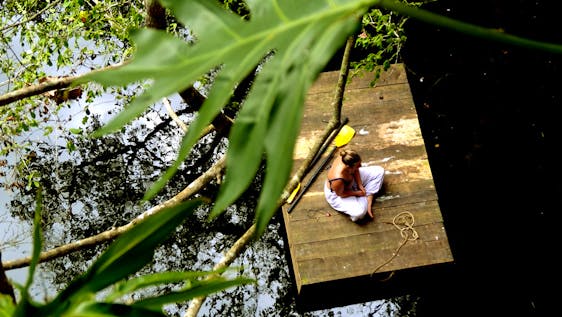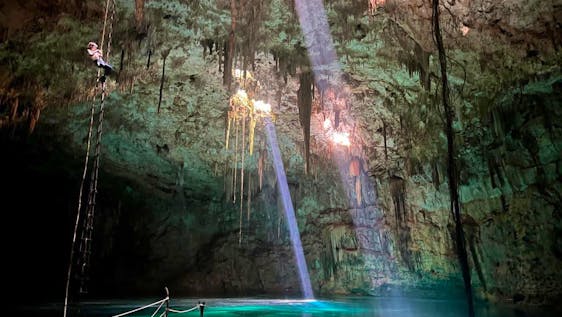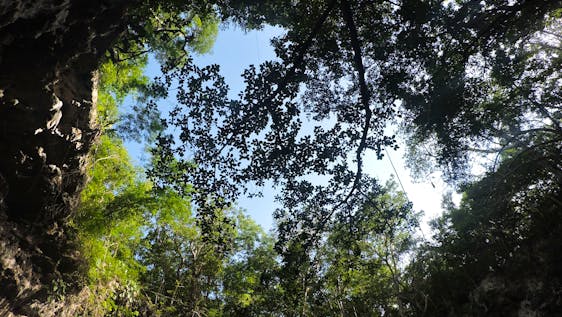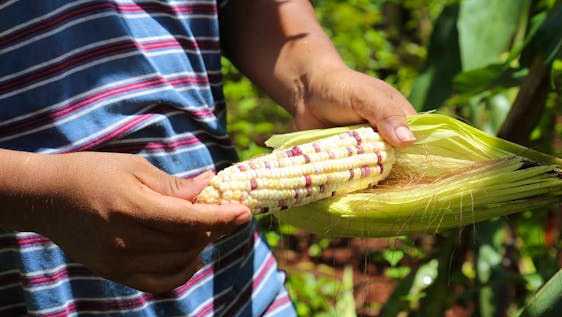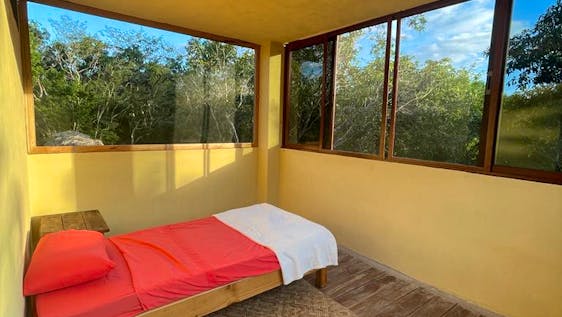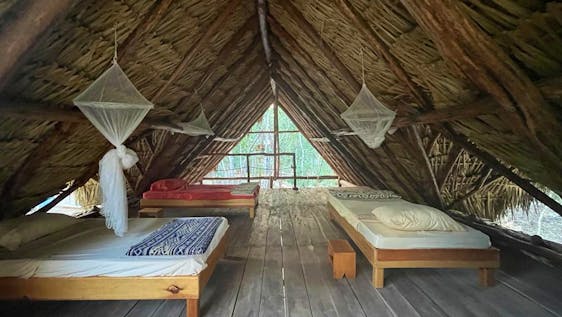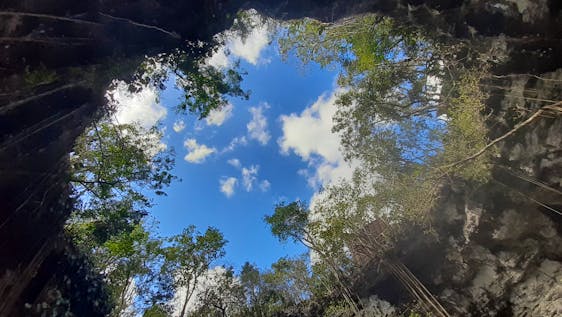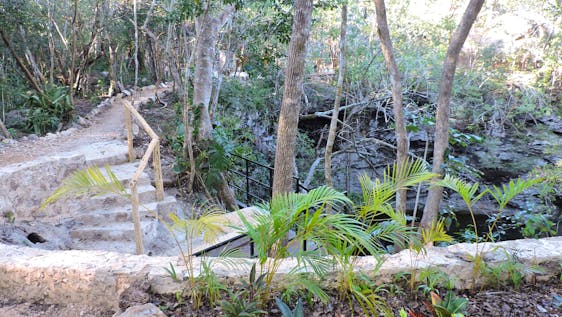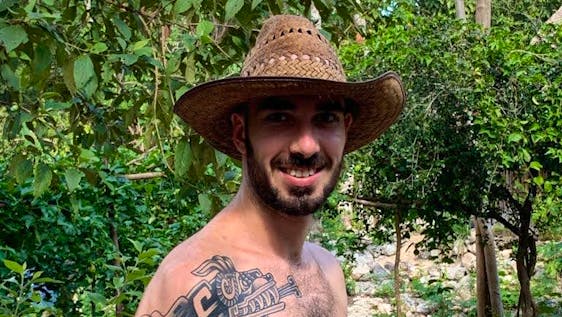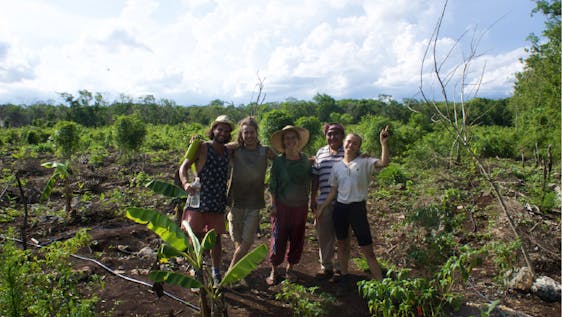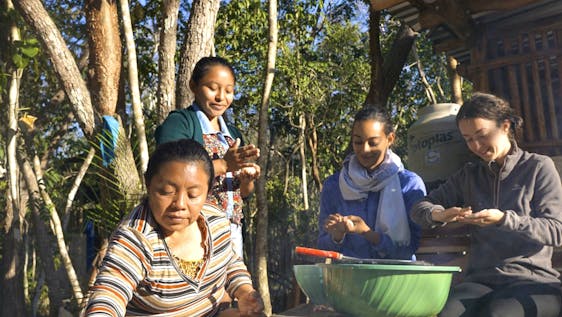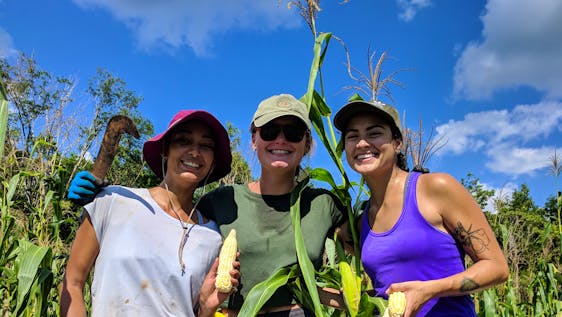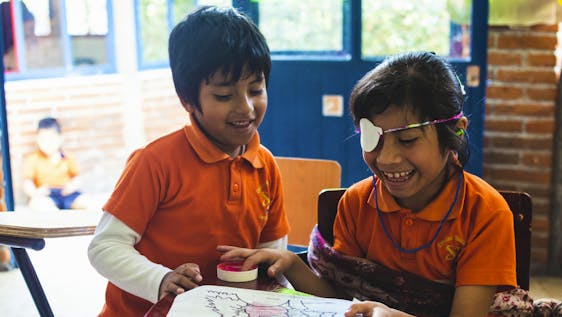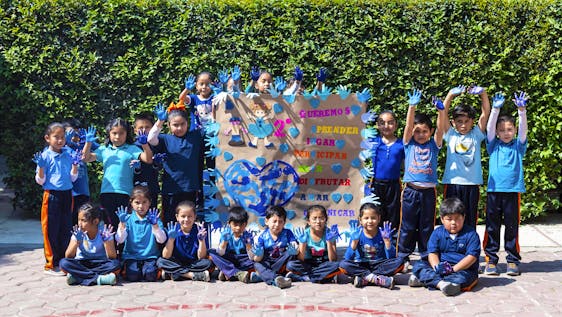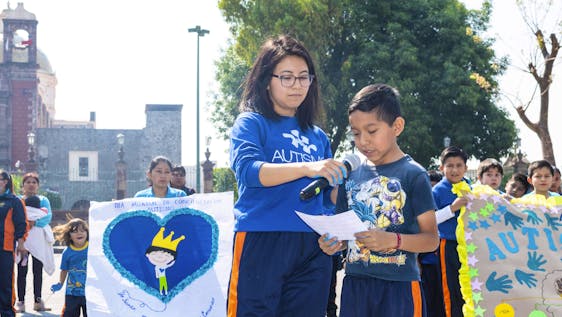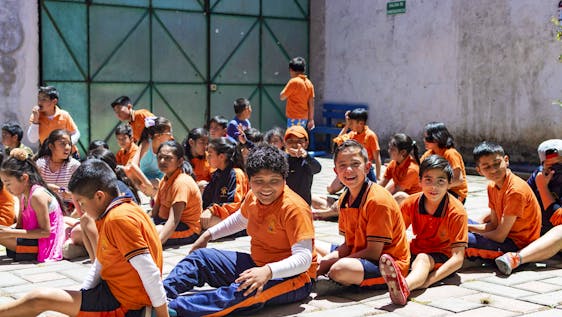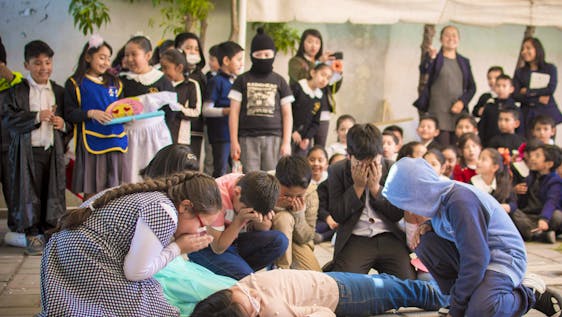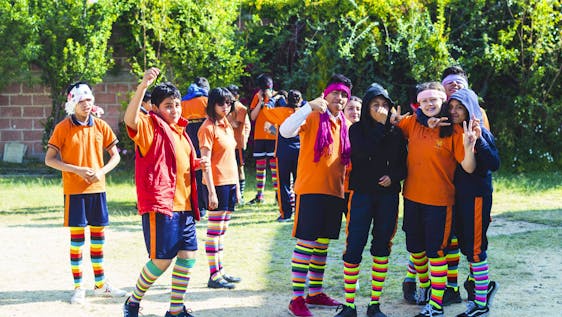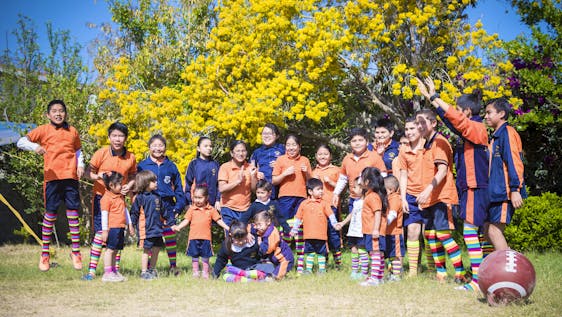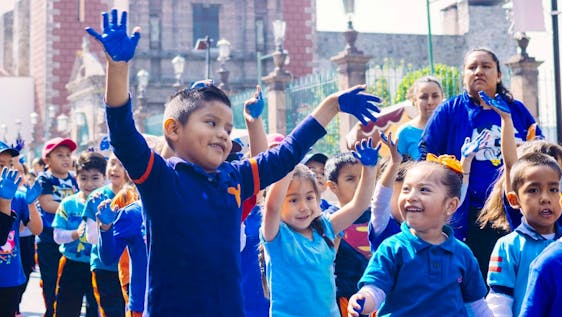Volunteer in Mexico
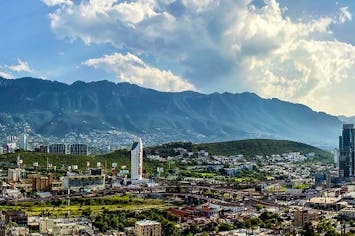
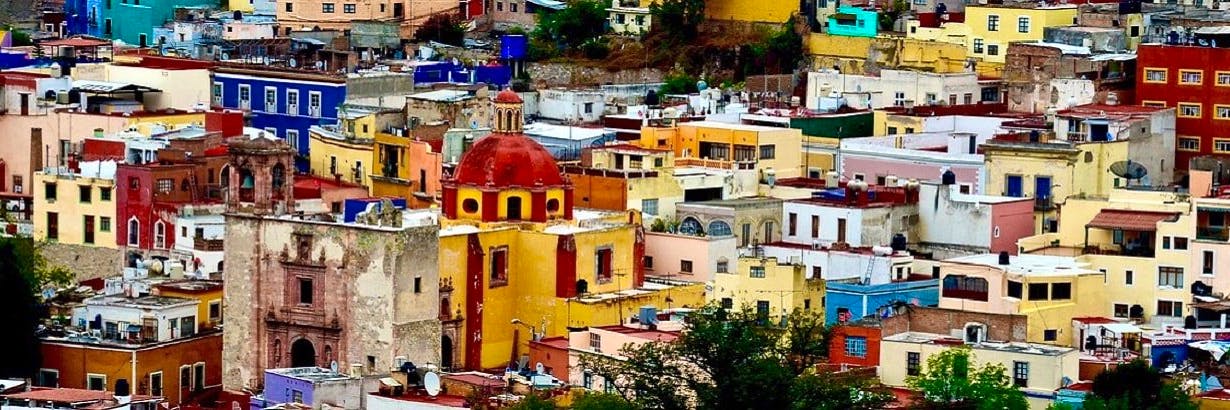
Volunteer work in Mexico
When you think about the "United States of Mexico", as the country is officially called, the first things that come to your mind are probably Mexico's renowned foods, alcoholic beverages, beautiful beaches, ancient monuments or the megacity that is the capital Mexico City? One thing you may not necessarily associate Mexico with is volunteering - well, until now!
Even though Mexico has better living conditions than many of its neighboring Latin American countries, the situation in the largest Spanish speaking country in the world is far from ideal. Mexico is one of the world's leading tourist destinations - for a good reason! Latin America's second largest country has a lot to offer. From magnificent beaches and surfing spots, delicious meals like Tacos or Enchiladas, to monumental remains of one of the world's richest and oldest civilizations - the attractions are basically infinite and so is volunteer work in Mexico.
Yet there is another side of Mexico that is not so bright. There are huge economic discrepancies between the different states, cities, and people. Corrupt politicians and failed policies have contributed to the huge disparities. If there is nothing that grinds your gears more than injustices like these, step in now and volunteer in Mexico! As a volunteer in Mexico, you can help the least fortunate of Mexico's residents, whether you’ll teach English in Mexico or help save sea turtles, this guide will provide you with information about all the volunteer opportunities in Mexico.
Volunteer work in Mexico
Mexico is a country full of diversity. Ranging from ethnic and cultural differences to climate conditions over to biodiversity - Mexico pretty much offers something for everybody. Unfortunately, the diversity does not only entail positive aspects. Due to unequal societal conditions, Mexico needs to improveme in various aspects. This is a great opportunity for you to become active and offer your help as a volunteer in Mexico, while simultaneously discovering this unique and magnificent country!
Sea turtle conservation
Mexico’s natural beauty is mainly due to the country’s geographical location and diverse ecosystems. From lush rainforests and flourishing coral reefs to ancient cenotes, snowy mountains and arid deserts - the country’s territory offers perfect conditions for flora and fauna to thrive.
Mexico is one of the most biodiverse places in the world providing a habitat for over 200,000 different species. Everyone’s favorite marine dweller - the sea turtle - is among the 700 different kinds of reptiles that can be found here.
Have you always wanted to see one of the oldest creatures on Earth from up close? Then Mexico is the place to be. The country’s sweeping coastlines stretch over 10,000km along the Gulf of Mexico, the Caribbean Sea, and the Pacific Ocean providing feeding and nesting grounds for six out of the seven existing sea turtle species.
The Mexican government is doing a lot to protect its country’s biodiversity. About 2,500 different species are protected by law and over 170,000 square kilometers are designated Protected Natural Areas.
However, just like in many other places around the world, laws only prevent crimes to a certain extent. Therefore, sea turtles in Mexico are still under threat. Despite unfavorable natural conditions like decreasing nesting grounds, dying coral, and an abundance of predators, human behavior largely contributes to the marine animals’ population decrease.
Turtle eggs are considered a delicacy throughout Latin America and need to be protected for turtle populations to recover. That requires manpower to physically guard the nesting turtles, eggs, and hatchlings, but also to shift the public sentiment and educate locals about the impact of their actions.
Do you want to be part of the solution and shine a light on turtle conservation? Then this is your chance to make a difference! Mexican sea turtle conservation projects are desperately looking for volunteers to keep the marine dwellers safe.
Come stay in this beautiful country and join a local sea turtle sanctuary as a conservation volunteer. Your day as a volunteer for turtle conservation in Mexico could look something like this:
- Maintain the sea turtle conservation project site
- Educate international and local visitors about the project and its importance
- Find and protect nesting turtles on the beach
- Relocate turtle eggs into the safe haven of the sanctuary
- Protect marine turtle eggs from poachers and predators
- Care for turtle hatchlings and make sure they have safe passage into the ocean
- Nurse injured turtles back to health
- Guard the project site against illegal visitors
Can you imagine a better vacation than spending your days on pristine Mexican beaches eating tacos while protecting one of the most precious marine creatures on our planet? Dive into the vibrant Mexican culture, revel in the country’s dazzling beauty and save sea turtles as a conservation volunteer.
Support community services
As you know by now, Mexico still has serious problems regarding poverty. Millions of Mexicans are still living in detrimental living conditions. The situation is especially desperate for families living in rural areas. People living far away from the big metropolitan cities are lacking basic amenities. Facilities in these rural communities lack appropriate infrastructure standards. Indigenous people in the Southern States, especially, are suffering under these circumstances.
The following points will show you an overview of the tasks you can do as a volunteer in Mexico in the area of community services:
- empowering indigenous women by providing knowledge for small-scale businesses
- online and direct marketing for small businesses
- supporting families by supervising children
- organizing activities for children
Southern regions have historically always been segregated from the rest of the country. People in these rural regions are unfortunately topping Mexico's list in regards to unemployment, illiteracy, childbirth as well as a lack of basic infrastructure. This is why community volunteer work in these regions is especially needed.
Support local NGO's
Even though Mexico is Latin America's second-biggest economy, the real-life conditions of the least fortunate are not affected by this fact. The truth is that Mexico's wealth is distributed amongst a few individuals and the gap is steadily growing. Actually close to 75% of all indigenous people are living in poverty. NGO work would help to analytically evaluate ongoing programs in the regions in order to improve the lives of the people who need it the most. Typical obligations as a volunteer in Mexico may be:
- acquiring qualitative and quantitative data
- data assessment
- creating meaningful reports and visualizations to communicate insights
Please note that as a volunteer in Mexico in this field, you will need to be properly educated in order to participate in these kinds of projects.
Teaching English in Mexico
Education has a long tradition in Mexico and the first university dates back to the times of Hernan Cortes. Nonetheless, the educational facilities in the rural areas are not up to par with the counterparts in the northern states, neither are English skills. Approximately 50% of the population in the less fortunate regions have spent less than seven years in school. In today's global economy, those without a good education are at a clear disadvantage.
The English language plays a crucial part in being competitive and overcoming unemployment. If English is your mother tongue or you happen to speak it fluently, teach Englishin Mexico and help improve the English skills of the community. Volunteers are encouraged to apply for these programs, some even without prior tutoring experiences.
Whether you are studying education, have several years of teaching behind you or simply want to do something different, teach English in Mexico and gain an unforgettable experience.
Internship in Mexico
Students who are excited about gaining some international work experience will find inspiring opportunities in Mexico. Look for a volunteer opportunity that fits with your field of study and ask for approval from your university. This way your volunteer experience abroad will count as an internship and you can gain study credits. Whether you’re studying education, biology, social work or law, there are plenty of volunteer programs that will be a fantastic internship. Simply start by taking a look at the different projects in Mexico!
It’s no secret that international work experience is appreciated greatly by future employers. Doing an internship abroad or gaining any type of international work experience will demonstrate a high level of independence and ability to handle new situations. A huge plus when applying for future job opportunities. Be a step ahead and do your internship in Mexico. A country that will bewilder all your senses.
Cost of living
The suggested daily budget for living abroad as a volunteer in Mexico is between US$23 and US$53. This is an estimate made considering the average price of some of the services you might need and things you might want to buy. It gives you a general overview of how much things cost in this country, so you can be prepared and save the money you will need for one of the volunteer programs in Mexico.
Additional costs you should consider will be:
- program fees
- flight tickets (find cheap flights to Mexico)
- travel insurance (find your travel insurance)
- fees for your visa
- personal expenses
An exemplary overview of living costs in Mexico (in US$, for one person) is:
Things to know before you volunteer in Mexico
Before starting as a volunteer in Mexico, it's important to think about the cultural norms you'll need to adjust to. In addition, learn about the precautions you might need to take. The following list will help you with that:
Safety & Precautions
When traveling to Mexico, you should follow common sense and avoid possibly dangerous situations. Due to recent drug-related violent events and their media coverages, Mexico has the reputation of being one of the more dangerous traveling destinations. Even though the touristic destinations in the country are relatively safe, there are areas where special caution is advised. Here are some valuable tips in order to stay safe in Mexico:
-
Plan ahead: Before you decide to rent a car/bike and adventurously explore the country all by yourself, you should put some thought into your endeavors.
On the
US Department's website,
you will find an overview of all the states and the precautions that should be taken into consideration before departing. Here is also
a list of the most dangerous & most safe cities in Mexico according to Forbes:
- Most Dangerous: Acapulco, Tepic, Nuevo Laredo, Monterrey, Tecoman, Colima, Iguala, Pungarabato, Chilpancingo de Los Bravos, Coatzacoalcos
- Most Safe: Cancún, Cozumel, Playa del Carmen, Merida, Campeche, Oaxaca, Mexico City, Los Cabos
- Beware of scammers & muggers: Pickpocketing at ATMs is not an uncommon phenomenon. You should never openly display jewelry or money in public places. Avoid sketchy looking streets and do not roam around unknown places at night. Always use ATMs during the day as often times during the night muggers are waiting for victims. Moreover, you should avoid unofficial taxis and instead only use "sitio" taxis which are licensed by the state. If you decide to rent a car/bike avoid driving at night as in certain states carjackings have been reported.
- Don't get too political: Even though you are a rebel with a cause, your initiative to help others should be done throughout the organizational volunteering work and not active political protests. Due to Mexico's economic situation being far away from ideal, protests are not really a rare occurrence. The protests can often spark violence among protesters and police officers. During the clashes, the Mexican Police may not be as tolerant as in the majority of western countries, and you are not granted any special treatment being a foreigner.
Culture and religion
Mexico's rich cultural heritage dates back to more than 10,000 years ago and is considered to be one of the "cradles of civilization". Although most Mexicans have different ethnic backgrounds including Native, European, African and even Middle-Eastern ancestry, they proudly identify as Mexican. Mexicans are predominantly Roman Catholic and religion plays a crucial part in people's daily lives. As Mexicans went through a lot of hardships in order to establish their country's independence and are usually a thick-skinned people, you should still try to display courtesy at all times. Mexicans are very warm-hearted people and make great conversational partners. Here are a few guidelines to follow so you can make some Mexicans friend:
- Take it easy Gringo! Don't take offense if someone addresses you based on your appearance. Often times words that can seem offensive at first are meant as terms of endearment. People will often refer to people with a dark complexion as "negro/negra" (black) and fair skinned people as "güero/güera" (blonde). People of East Asian descent will oftentimes be called "chinos" (Chinese) regardless of their country of origin.
- Siesta Time! Do not expect things to happen overnight. Even though things might seem hectic sometime, Mexicans don't like to live life at a too fast pace. Bring some patience with you as things simply take a bit more time here.
- Be respectful: Mexicans are very traditional when it comes to manners. You never address anyone older than 16 with "tu" as it is considered impolite. Also, male acts of courtesy towards women, that might be considered flirtatious in other countries are the norm in Mexico (e.g. holding the door open, giving up a seat, helping a woman with a steep step, etc.). Also, always remember to be appropriately dressed when visiting a church. Do not wear clothing that reveals too much skin.
Health advice
Before traveling to Mexico you should plan 4-6 weeks ahead on updating all your vaccinations. The US-based health protection agency CDC recommends getting the following vaccines
-
Vaccines:
- MMR
- DTP
- chickenpox
- polio
Moreover, pregnant women should avoid traveling to Mexico as they are put at risk due to the possibility of being infected by the zika virus. Further, volunteers should be aware of the following health points:
- Altitude sickness: Places like Mexico City, which are at higher altitudes can give you headaches, due to shortness of breath. In extreme cases, it can lead to cardiovascular problems.
- Additional tips: Eat and drink safely. You probably already know this, but it's good to stick to bottled water and don't drink from the tap. Food should be cooked and served hot.
Packing essentials
Depending on your location and the season during which you volunteer, the packing essentials will vary greatly. Assuming that you will not only be stationary in one place, as Mexico has so many amazing things to offer, the following guide will give you some general recommendations on what you should bring with you.
- You should bring sunscreen and insect repellent with you to avoid any sunburn or, even worse, infections from mosquitos that can transmit the zika virus or other tropical illnesses.
- Long sleeve shirts
- Pack lightweight clothing as well as well as a raincoat and sturdy shoes.
- Bring photocopies of your essential travel documents like passport, travel medical insurance information and visa, and keep them safe at your accommodation.
Who can volunteer in Mexico?
As you will have noticed by now, there is a great number of different volunteer opportunities in Mexico that expect different skills and abilities from their volunteers. While you can find out the specific requirements for each project in their profile on Volunteer World, here are some general requirements that apply to most volunteer programs in Mexico:
- You need to be at least 18 years old for most of the volunteer programs in Mexico. When in doubt, we advise you to get in contact with the local project manager, as in some projects you can also volunteer when you're 16 years old.
- You should have a basic level of English knowledge; some volunteer programs in Mexico also require advanced English knowledge or basic Spanish skills
- Depending on the project you're interested in, you might need to provide a criminal background check and a health declaration before volunteering.
What visa do I need for volunteering in Mexico?
You have made it to the last section of this guide, which is another really important aspect while planning your volunteer work in Mexico: getting your volunteer visa for Mexico.
Please consider that the following information is based on a best practice approach, which has been made according to the best of our knowledge and in cooperation with several volunteer organizations. That's why you should please make sure to discuss your visa requirements with your contact person on Volunteer World. If in doubt, we also recommend getting in touch with the Mexican embassy or consulate in your country.
General immigration information
There are some general requirements volunteers should comply upon their arrival in Mexico:
- Please check the current validity of your passport. The passport should be valid at least 6 months following your departure date from Mexico. We strongly recommend traveling with 6 months validity on your passport at all times.
- Make sure your passport has at least two blank Visa pages. Mexico requires that you have adequate unused pages in your passport, allowing for any necessary stamps upon arrival and departure.
- Please check if a transit visa is required for any connections.
- Make sure to be in possession of a valid return ticket for your travel home.
Best practice for short-term and long-term volunteers
As a citizen of most American countries, Japan, the United Kingdom or the Schengen area (European Union), you can enter Mexico without a Visa. On a single entry, you are allowed to stay up to 180 days for vacation or business. Here is an overview of those countries that can enter without a visa.
Please keep in mind though, that this is the maximum amount of days which is not extendable once you have entered Mexico. If you intend to stay longer than 180 days, you need to leave Mexico to one of its neighboring countries and re-enter it to get a new tourist visa for another 180 days.
 Waste Reduction
Waste Reduction
 Animal
Animal
 Shark Conservation
Shark Conservation
 Marine Life
Marine Life
 Ocean Cleaning
Ocean Cleaning
 Hotspots
Hotspots
 Sea Turtle Conservation
Sea Turtle Conservation
 Activities
Activities
 Vegan
Vegan
 Beach Cleaning
Beach Cleaning
 Whitetip Reef Shark
Whitetip Reef Shark
 Blacktip Reef Shark
Blacktip Reef Shark
 Puerto Escondido
Puerto Escondido
 Animal Shelter
Animal Shelter
 Dog
Dog
 Street Animals
Street Animals
 Oaxaca
Oaxaca
 Green Sea Turtle
Green Sea Turtle
 Olive Ridley Turtle
Olive Ridley Turtle
 Leatherback Turtle
Leatherback Turtle
 Education
Education
 Primary School
Primary School
 Horse
Horse
 Horse Sanctuary
Horse Sanctuary
 Wildlife Conservation
Wildlife Conservation
 Spanish Courses
Spanish Courses
 Language Course
Language Course
 Plastic Reduction
Plastic Reduction
 Community
Community
 Social Work
Social Work
 Ecological Farming
Ecological Farming
 English Teaching
English Teaching
 Whale Conservation
Whale Conservation
 Humpback Whale
Humpback Whale
 Environment
Environment
 Marine Conservation
Marine Conservation
 Diving
Diving
 Coral Reef
Coral Reef
 Snorkeling
Snorkeling
 Diving certificate
Diving certificate
 Plant Conservation
Plant Conservation
 PADI Divemaster
PADI Divemaster
 Reptile Conservation
Reptile Conservation
 Hawksbill Turtle
Hawksbill Turtle
 Crocodile
Crocodile
 Reforestation
Reforestation
 Planting Trees
Planting Trees
 Agriculture
Agriculture
 Youth Teaching
Youth Teaching

